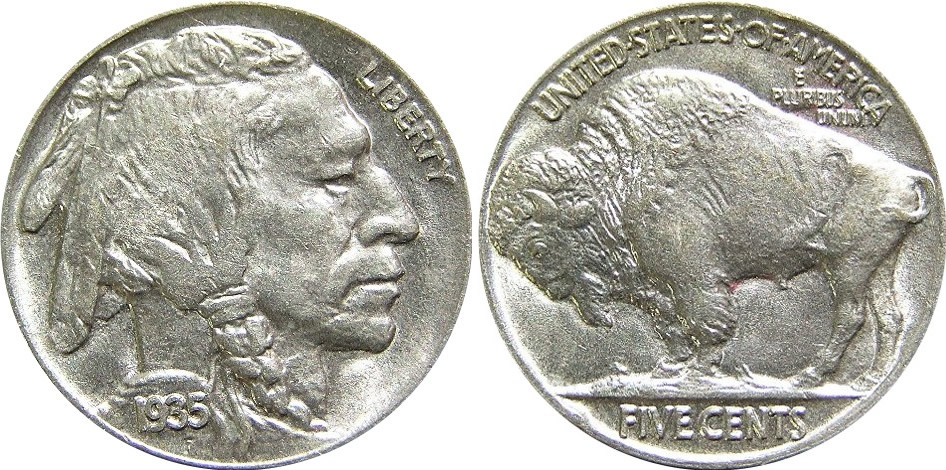Nickel is element 28 on the periodic table. Its name was bestowed by German copper miners and is derived from the word “kupfernickel”, which translates to “little nick’s copper”. Besides being a component of the eponymous US five-cent coin — nowadays it’s actually 75 percent copper — it has some rather surprising uses, from making margarine to forming critical elements of modern jet engines.
From the BBC:
It made the age of cheap foreign holidays possible, and for years it was what made margarine spreadable. Nickel may not be the flashiest metal but modern life would be very different without it.
Deep in the bowels of University College London lies a machine workshop, where metals are cut, lathed and shaped into instruments and equipment for the various science departments.
Chemistry professor Andrea Sella stands before me holding a thick, two-metre-long pipe made of Monel, a nickel-copper alloy. Then he lets it fall to the ground with a deafening clang.
“That really speaks to the hardness and stiffness of this metal,” he explains, picking up the undamaged pipe.
But another reason Monel is a “fantastic alloy”, he says, is that it resists corrosion. Chemists need ways of handling highly reactive materials – powerful acids perhaps, or gases like fluorine and chlorine – so they need something that won’t itself react with them.
Gold, silver or platinum might do, but imagine the price of two-meter-long pipe made of gold. Nickel by contrast is cheap and abundant, so it crops up everywhere where corrosion is a concern – from chemist’s spatulas to the protective coating on bicycle sprockets.
But nickel can produce other alloys far quirkier than Monel, Sella is eager to explain.
Take Invar, an alloy of nickel and iron. Uniquely, it hardly expands or contracts with changes in the temperature – a property that comes in very handy in precision instruments and clocks, whose workings can be interfered with by the “thermal expansion” of other lowlier metals.
Then there is Nitinol.
Sella produces a wire in the shape of a paperclip – but it is far too easy to twist out of shape to be of use holding sheets of paper together. He mangles it in his fingers, then dips it into a cup of boiling water. It immediately writhes about… and turns back into a perfect paperclip.
Nitinol has a special memory for the shape in which it is first formed. And its composition can be tuned, so that at a particular temperature it will always return to that original shape. This means, for example, that a rolled-up Nitinol stent can be inserted into a blood vessel. As it warms to body temperature, the stent opens itself out, allowing blood to flow through it.
But all these alloys pale in significance compared to a special class of alloys – so special they are called “superalloys”. These are the alloys that made the jet age possible.
The first jet engines were developed simultaneously in the 1930s and 40s, by Frank Whittle in the UK and by Hans von Ohain in Germany, both on opposing sides of an accelerating arms race.
Those engines, made of steel, had serious shortcomings.
“They didn’t have the temperature capability to go above about 500C,” explains Mike Hicks, head of materials at Rolls-Royce, the UK’s biggest manufacturer of jet turbines. “Its strength falls off quite quickly and its corrosion resistance isn’t good.”
In response, the Rolls-Royce team that took up Whittle’s work in the 1940s went back to the drawing board – one with the periodic table pinned on to it.
Tungsten was too heavy. Copper melted at too low a temperature. But nickel – with a bit of chromium mixed in – was the Goldilocks recipe. It tolerated high temperatures, it was strong, corrosion-resistant, cheap and light.
Today, the descendants of these early superalloys still provide most of the back end of turbines – both those used on jet planes, and those used in power generation.
“The turbine blades have to operate in the hottest part of the engine, and it’s spinning at a very high speed,” says Hicks’s colleague Neil Glover, head of materials technology research at Rolls-Royce.
“Each one of these blades extracts the same power as a Formula 1 racing car engine, and there are 68 of these in the core of the modern gas turbine engine.”
Read the entire article here.
Image: 1935 Buffalo Nickel. Public Domain.

